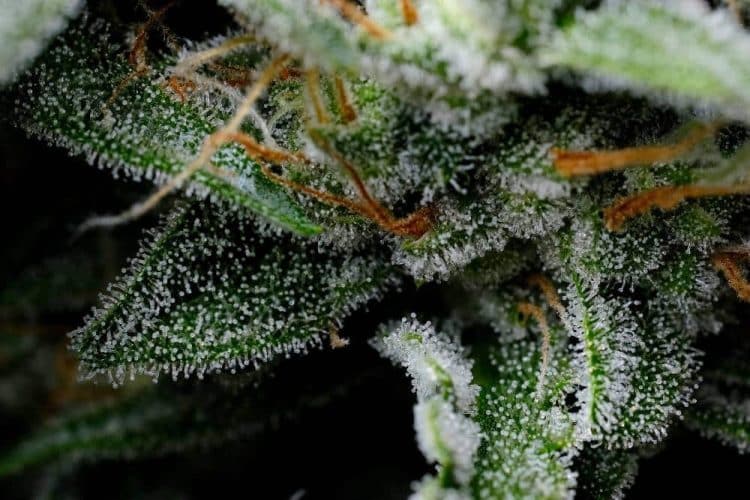Typically cannabis potency is determined by the tetrahydrocannabinol (THC) content, the main psychotropic cannabis constituent, going from 4% in the 80’s up to highly concentrated products like shatter, oil or edibles containing even 95% THC. Nevertheless THC is not the only responsible for the potency of a cannabis variety. It is a common mistake that people consider the THC content strictly and directly related to the healing capabilities of cannabis, but it should be noticed that the effects depend on the overall plant composition: cannabis produces hundreds of different compounds including various phytocannabinoids, terpenoids, sterols and flavonoids. The synergistic effect of all the cannabis constituents is called “entourage effect” and it was first postulated by Mechoulam and Ben-Shaba in 1998. [1] According to their hypothesis, the action of major active cannabinoids can be enhanced by other minor cannabis constituents which contribute both in the sense of additional therapeutic effect or in enhancing the premeability of cannabinoids in human tissues. [2] There is evidence that a full-spectrum cannabis extract has more effect compared to a purified single cannabinoid. [3] During the extraction process, depending on the technique used, a great amount of terpenes may be lost and they could be present in low concentration in the final extract. Nevertheless they may still contribute significantly to the overall cannabis variety effect and largely enhance the mood-stabilizing effect of major cannabinoids such as THC and cannabidiol (CBD). [2]
To make an example, among recreational users Cannabis indica varieties contain high levels of the terpene myrcene which may contribute to the relaxation effect and to lower the anxiety, while Cannabis sativa chemovars are rich in limonene, a terpenes which is related to arousing behaviour. [2] The subtle differences of cannabis compositions have still to be investigated to precisely define the mechanism of compounds interactions and to collect enough scientific evidence to support the entourage effect theory. It should be noticed that the potency of a particular cannabis variety can be perceived differently among users depending on various factors including age, sex, weight, frequency of use thus THC levels in the blood, sensitivity to active ingredients etc. [4] Regardless of whether cannabis inflorescences or extracts are used, it is always good practice to test a small amount of product before taking the whole dose in order to check how our body react to the active ingredients.
References:
[1] Ben-Shabat S., Fride E., Sheskin T., Tamiri T., Rhee M.H., Vogel Z., Bisogno T., De Petrocellis L., Di Marzo V., Mechoulam R. An entourage effect: Inactive endogenous fatty acid glycerol esters enhance 2-Arachidonoyl-Glycerol cannabinoid activity. Eur. J. Pharmacol. 1998;17, 353(1):23–31. doi: 10.1016/S0014-2999(98)00392-6.. [Journal impact factor = 4.96] [Times cited = 655]
[2] Ferber SG, Namdar D, Hen-Shoval D, Eger G, Koltai H, Shoval G, Shbiro L, Weller A. The “Entourage Effect”: Terpenes Coupled with Cannabinoids for the Treatment of Mood Disorders and Anxiety Disorders. Curr Neuropharmacol. 2020;18(2):87-96. doi: 10.2174/1570159X17666190903103923. [Journal impact factor = 7.24 ] [Times cited = 93]
[3] Russo E. B. The case for the entourage effect and conventional breeding of clinical cannabis: No “Strain,” no gain. Front. Plant Sci. 2019 doi: 10.3389/fpls.2018.01969.. [Journal impact factor = 4.298] [Times cited = 239]
[4] https://www.uchicagomedicine.org/forefront/research-and-discoveries-articles/cannabis-impacts-distinct-demographics-differently
Image: https://www.bigstockphoto.com/it/image-446175722/stock-photo-close-up-trichomes-on-fresh-marijuana-bud-macro-cannabis











